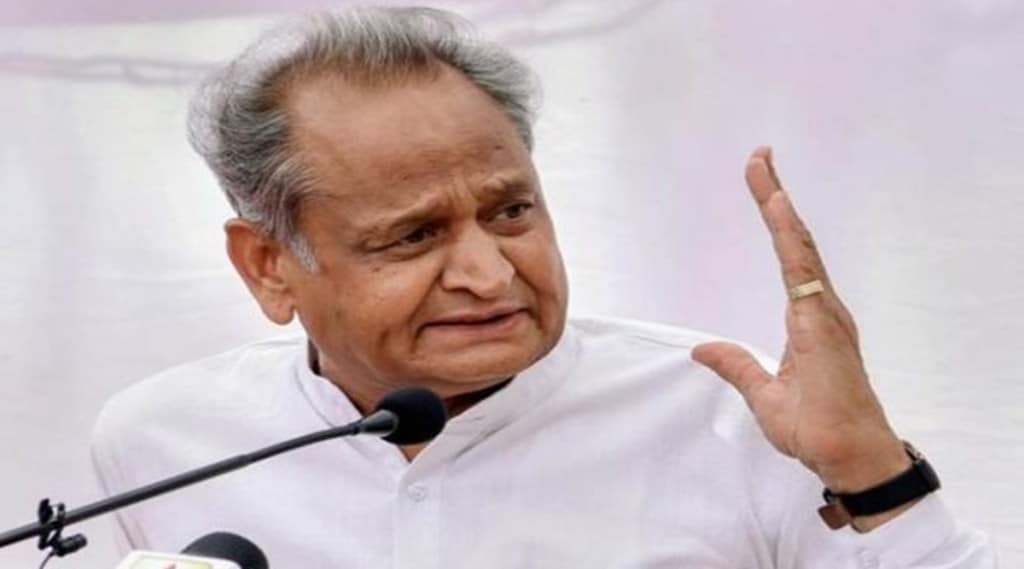By Mukesh Anand
In his speech preceding the budget presentation for FY23, Rajasthan’s CM announced reversion to the ‘old pension scheme’ for all government service appointees on or after January 1, 2004. This appears regressive and, observers fear, may set off a ripple in governments at all levels in India. For reasons less understood, pension programmes and their reform in India is processed as an emotive issue rather than as socio-economic object. Moreover, the discussion preceding the introduction of the ‘national pension system’ under the oversight of Pension Fund Regulatory and Development Authority (PFRDA) had veered away from equity and sustainability concerns to extolling the virtues of investments in market-based instruments that could, with some luck, yield returns to deliver higher benefits than assured under the old scheme. This, by now has been realised to be too good to be true.
Unfortunately, few attempts were made for a system-wide socio-economic assessment, and ‘reforms’ only added to the patchwork. One could, however, make an assessment by utilising a benchmark like the five-pillar design (popularised by World Bank) of a social security system. In that design, simply stated, pillar-0 (P0) serves social pensions; P1 serves defined benefits (DB) in pay-as-you-go (PAYG) scheme; P2 constitutes of mandatory defined contribution (DC) schemes; P3 constitutes of voluntary contribution schemes; and finally, P4 includes schemes with in-kind benefits. Such an exercise could elucidate on, inclusion of workers, coverage of elderly, and their distribution in the system. Further, one could trace the draft on public resources, the distribution of benefits, and objectively discuss equity and sustainability concerns.
A translation of the extant system in India onto the five-pillar design broadly appears as follows— P0 is the National Social Assistance Programme (NSAP) for the poor among elderly, widows, and disabled, state variants of similar programmes for special groups; P1 contains DB programmes (old pension scheme) for federal and state government civilian employees, defence employees, and Freedom Fighters; P2 is the Employees Provident Fund (EPF), Jammu & Kashmir Employees Provident Fund (merged into EPF in 2019), Assam Tea Plantations Fund, Coal Mines Provident Fund, Seamen’s Provident Fund, National Pension Scheme for federal government employees (NPS-Fed), and NPS-state; P3 consists of Public Provident Fund (PPF), Senior Citizens Savings Scheme (SCSS), General Provident Fund (GPF), Atal Pension Yojana (APY); and P4 has the Annapurna scheme, Integrated Programme for Older Persons (IPOP).
Administering the system through differing line ministries and departments involving frequent subtle changes to programme design, including in their naming, may easily render huge complexities for a regular system-wide analysis. Note further that among the schemes and programmes listed above, PFRDA has the remit only for NPS-Fed, NPS-St, and APY. The regulatory space remains cluttered with some legacy institutions catering to declining or minuscule membership (for example, SPF has less than 0.06 million members compared to the pension scheme of EPF that has 34.9 million accounts).
System-wide study with some limitations endorsed that nearly 80% of 470 million workers are excluded from it. The pillars P1, P2, and P3 respectively included only 2, 10.5, and 7.5% of workers. Further, almost 84% of those in P2 are members with EPF. The remit of PFRDA extends mandatorily to less than 1.34% of all workers, and another 4.5% in voluntarily subscribed (P3) schemes (namely, APY and NPS-All Citizens). Even if all government workers were reverted to the old pension scheme, only the distribution of workers under P1 and P2 would change to 3.4, and 9.1% without altering the status of P3 or excluded majority.
Of the nearly 135 million elderly (above age 60), more than 61% are not covered by pension benefits. Those drawing benefits under P1 constituted around 13% of the elderly, while almost 19% draw benefits from P0. A majority of beneficiaries under P0 and P2 draw annual pension benefits less than or close to the poverty line. However, average annual pension across beneficiaries in all schemes amounts to about half of PCGDP, while for government ex-employees it works out to almost twice the PCGDP. Further, average benefits among state government retirees exceeds the average for federal government retirees, and the average for defence ex-employees far exceeds that for civilian ex-employees.
Annual public expenditure draft of the system averages 11.5% of total public expenditure between 2010-1 and 2018-9, and grew from 2.83 trillion to 6.41 trillion. Of this, state governments bear 60%, on average; but the share circumscribed by P1 has grown from 58.5 to 67.6% and clearly that is where one should focus for benefit rationalisation. Without that rationalisation, given the resource limitations, it is only likely to lower social security by growing the proportions of excluded workers and uncovered elderly. Worse, it continues to perniciously impact cost of public service delivery, public sector employment, scope of public services, and in general, labour supply. It is imperative to design an equitable system to grow social capital.
Given that discontentment among post-2003 recruits had been simmering as accorded by the Rajasthan CM, his announcement on reversion is unsurprising. And, in the last decade and half, evidence abounds on full or partial reversals in more than half the developing economies that had opted for complete migration to a privately managed defined contribution (DC) system. The ‘reform’ process at best introduced an effective wage cut in civilian service, and at worst added another wedge into the compartmentalised labour market in India. Indeed, it not only weakened social compact but further eroded the sense of security from cohesion for risk-pooling and risk-sharing.
The author is assistant professor at National Institute of Public Finance and Policy (NIPFP). Co-authored with Rahul Chakraboty, research fellow, NIPFP.


